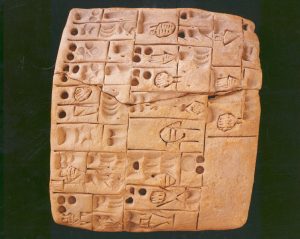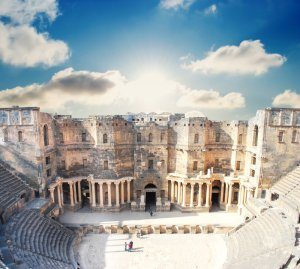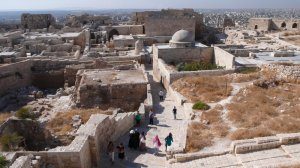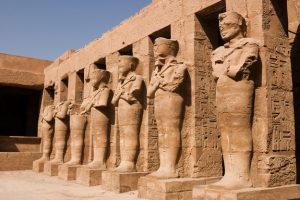BibliASPA helps to publish studies, research and archaeological and historical discoveries, organize projects and missions and disseminate the archaeological culture of countries such as Syria, Lebanon, Palestine, Iraq and Egypt, among others.
We have a fundamental collection of works on archeology in the Arab countries. Les Annales ArchèologiquesArabesSyriennes Revue d’Archéologie et d’Histoire, collection with special numbers on subjects such as “Aleppo and the Silk Road”, “Syrian Syriac Inscriptions” “,” Al Hayr Al Sharqi Castle Research “,” Archaeological prospection and the regional study of Tell Hamoukar “,” The archives of Ebla “,” Geoarchaeological study at Tell Umm el-Marra “, etc.
The works on archeology in the Arab countries and the Mediterranean bring studies on Jiyeh, Saqqara, Deir el-Bahari, Alexandria, Cairo, Palmyra, Bosra, Rock Paitings, among other subjects and places.
There are numerous partnerships in the area, including not only the General Directorate of Antiquities and Museums of Syria, the National Museum of Damascus, the Aleppo Museum, the Museum Department of Iraq, the National Antiquities and Museums Corporation of Sudan, Department of Museums of Tunisia, the National Council of Culture, Arts and Letters of Kuwait, among others.
Texts on Archeology:
The archaeological heritage of Syria
Archaeological contributions in Syria
Some of the world’s major archaeological sites are in Arab, African and South American countries. Here are some of them:
EBLA
The Kingdom of Ebla, considered one of the greatest discoveries of the twentieth century, brings the discovery of the Royal Archive, composed of five thousand inscriptions.
This archive revealed the history of the region during the period between 5500 and 4500 BC in relation to customs, traditions, political relations, and administrative and economic reality.
The archaeological site was discovered about 55 km south of Aleppo in 1964.
BOSRA
Bosra is a complete Roman-style town. Its amphitheater is considered the main complete amphitheater of the world. The city houses one of the oldest mosques in the world and a cathedral from the Byzantine period. It was first mentioned in inscriptions found at Tell el-Amarna 3,400 years ago. The Nabataeans ruled the region until, in 106, Bosra became part of the Roman empire. It was capital of the Roman province of Arabia.
ALEPPO
The ancient city of Aleppo has been continuously populated for at least 5000 years. Throughout this period it was ruled by almost all the great empires, from the Hittites to the Assyrians, through the Mongolians to the Ottomans. The city boasts a large 12th-century mosque and 13th-century citadel, built on an archaeological site dating to at least 3,000 BC.
DAMASCUS
Capital of Syria, Damascus was founded in the third millennium BC. Excavations around the city in Tell Ramad suggest that humans have lived in the region for at least 8,000 to 10,000 years. Traces of the city’s ancient heritage still stand today in various places, including a temple to the god Jupiter of the Roman Age, the walls of the ancient Roman city and the Umayyad Mosque, from the 8th century AD.
PALMIRA
Palmira oasis was the main trading post between Persians and the Romans. The city was first mentioned in the second century BC and acquired great relevance under Roman rule. In Palmira, there are important buildings such as the Temple of Bal, the Avenue of Columns, the Arc de Triumph, the theater, the public bathrooms and the markets.
BABYLON, IRAQ
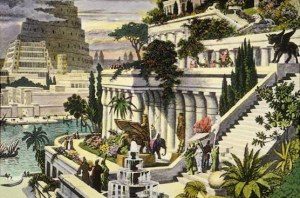 Ilustrations of the Sudpended Gardens, Babylon.
Ilustrations of the Sudpended Gardens, Babylon.
Important center of ancient Mesopotamia, the Suspended Gardens of Babylon were a marvel of the ancient world. Babylon had great prominence during the reign of Nebuchadnezzar II (605-563 BCE); Its ruins, located 85km from Baghdad, help us to remember the rich history of Iraq.
BAALBEK, Lebanon
Known as “the city of the sun,” Baalbek, in the fertile Beqaa Valley in Lebanon, is among the best preserved Roman ruins in the Middle East. Built in magnificent dimensions that rival even ancient Rome, it gathered pilgrims from all over the empire for worship. Baalbek hosts an art festival annually and has become an important cultural center.
SHIBAM, Yemen
Famous for its architectural characteristics, the 16th-century walled city of Shibam (Yemen) is famous for its astonishing tower-like structures. The town grew because of its location as an important caravan stop on the route of the seasoning and incense route through the southern plateau of Arabia.
ANCIENT JERUSALEM.
Ancient Jerusalem has got, long ago, a great significance. As a reflection of this, the winding streets within the ancient walled city are divided into Jewish, Christian, Muslim and Armenian neighborhoods. Among the various sacred sites of ancient Jerusalem, the Church of the Holy Sepulcher and the Dome of the Rock are probably some of the best known sites. Dating back to the 7th century, the Dome of the Rock is considered the place where Abraham would have offered his son in sacrifice.
KARNAK, Egypt.
Statues of Ramses II, as Osiris, temple of Karnak
Near Luxor, Karnak is a large religious complex full of shrines, pylons, obelisks, and particularly the Great Temple of Amon. Much of this complex is dedicated to Amon, fundamental god of ancient Egypt. Karnak is a modern place name; The old denomination was Ipet-isut, which means “The holiest places”.
MADAIN SALEH, Saudi Arabia.
This pre-Islamic archaeological site is the first UNESCO World Heritage Site in Saudi Arabia. Most of the archaeological site of Madain Saleh is a vestige of the Nabatean civilization, which existed around 1,000 years ago. This site is the largest and most southerly settlement in Saudi Arabia, after Petra, the capital of the Nabataeans located 500km north, in present-day Jordan.
CARTHAGE, Tunisia.
Carthage was founded by the Phoenicians in the 9th century BC in the Gulf of Tunis. Due to its strategic location, it has developed into a large commercial empire present in much of the Mediterranean. Carthage was destroyed by the Romans in 146 BC during the Punic Wars. A new Carthage was rebuilt with Roman aesthetics over its ruins.
